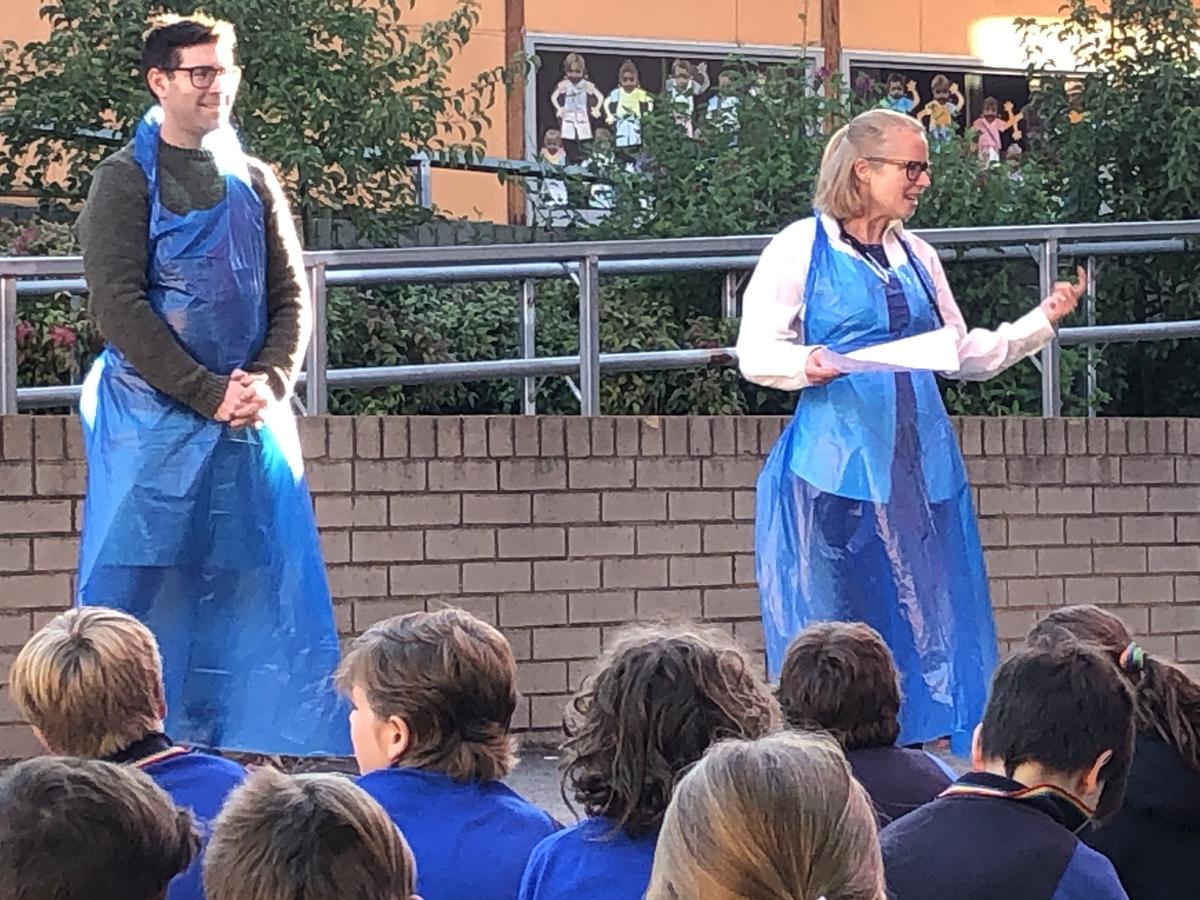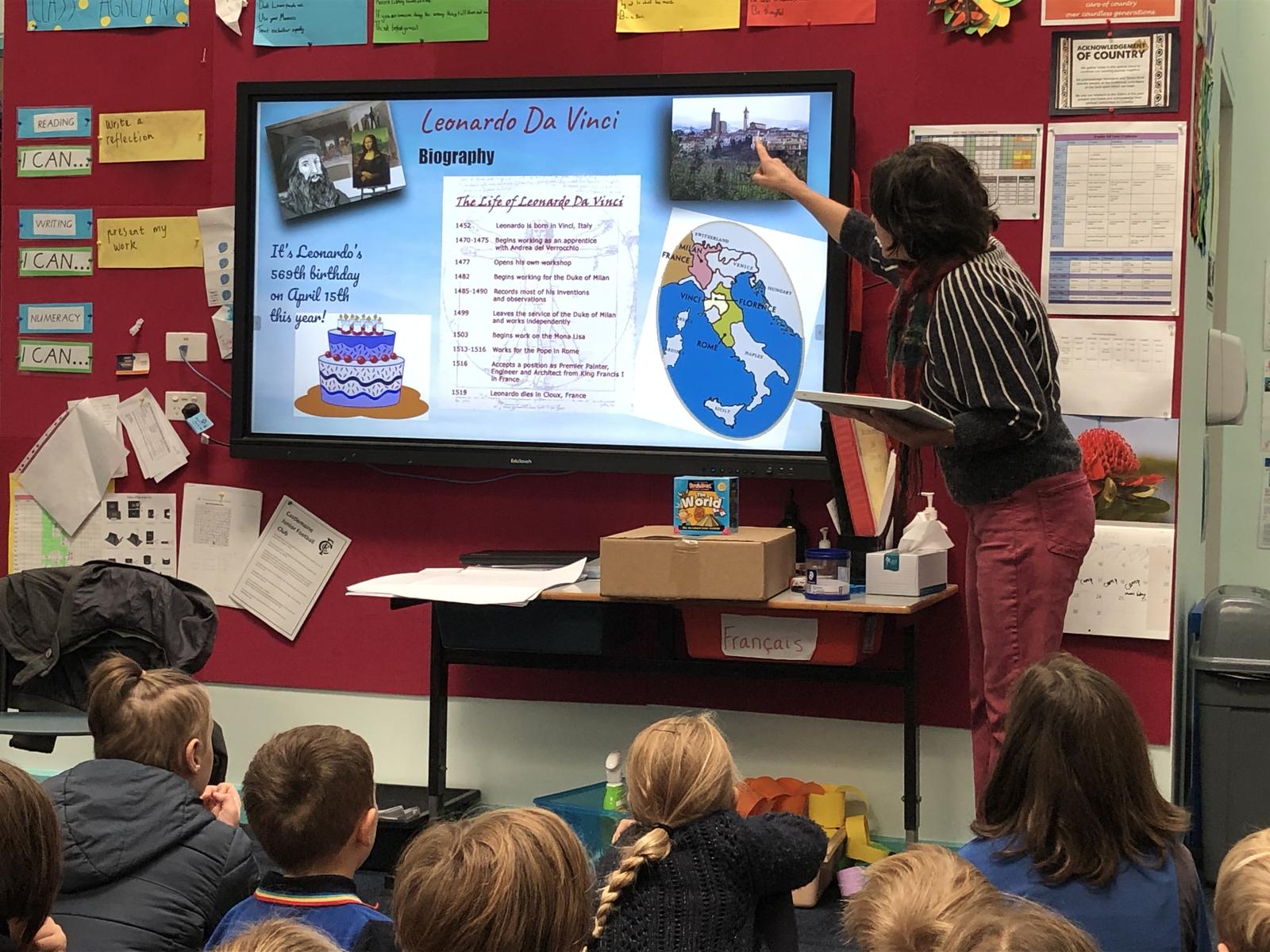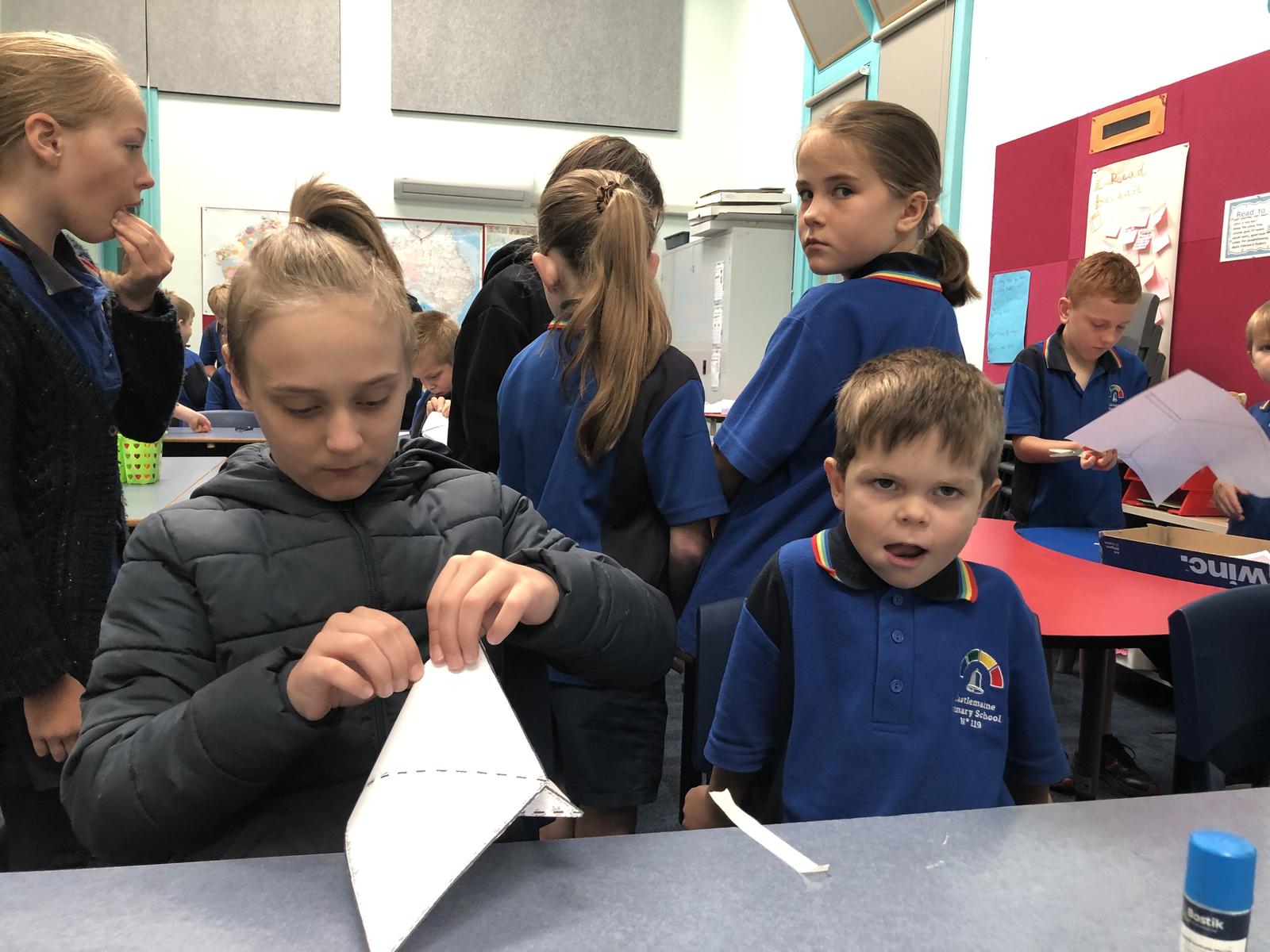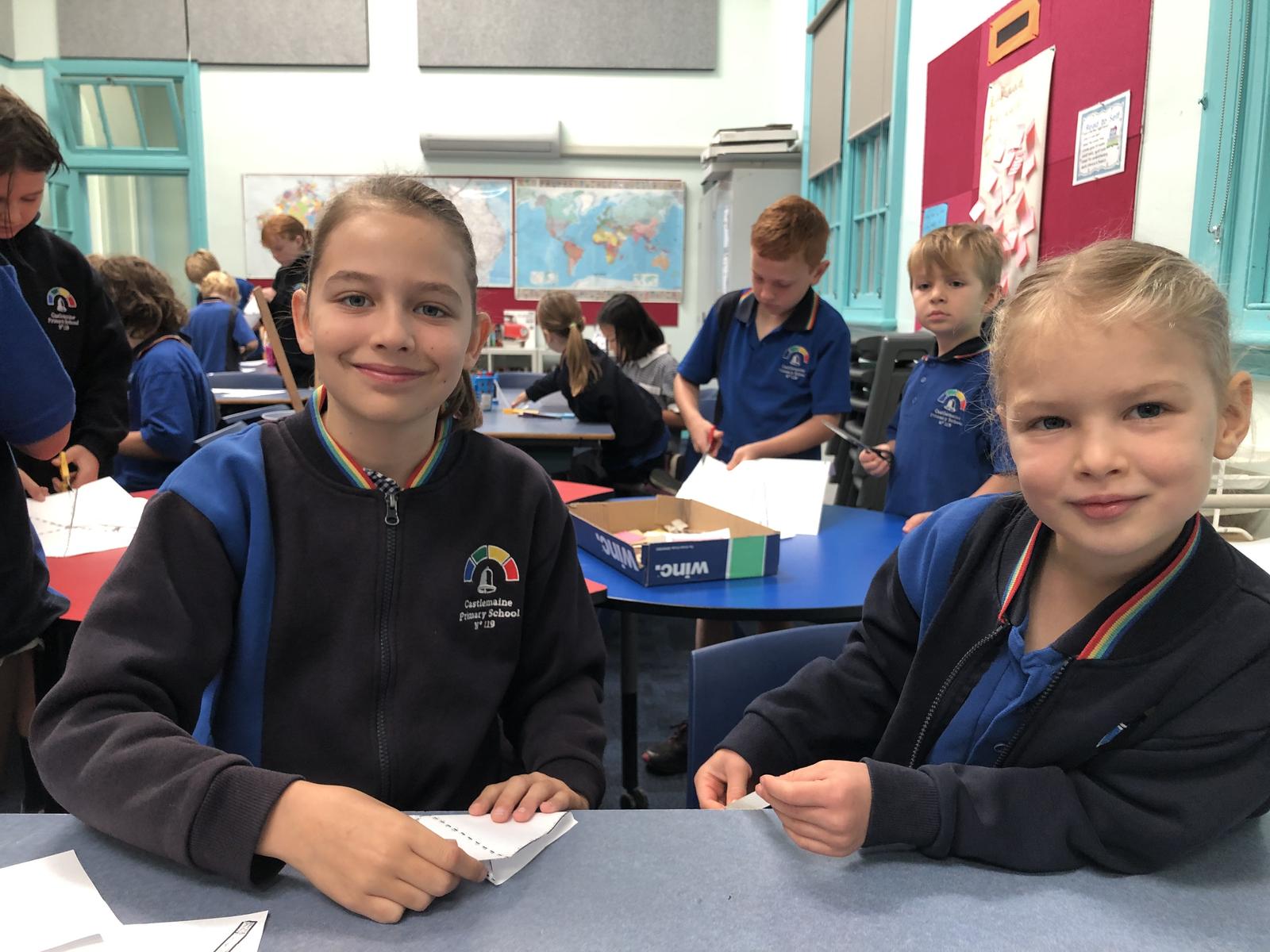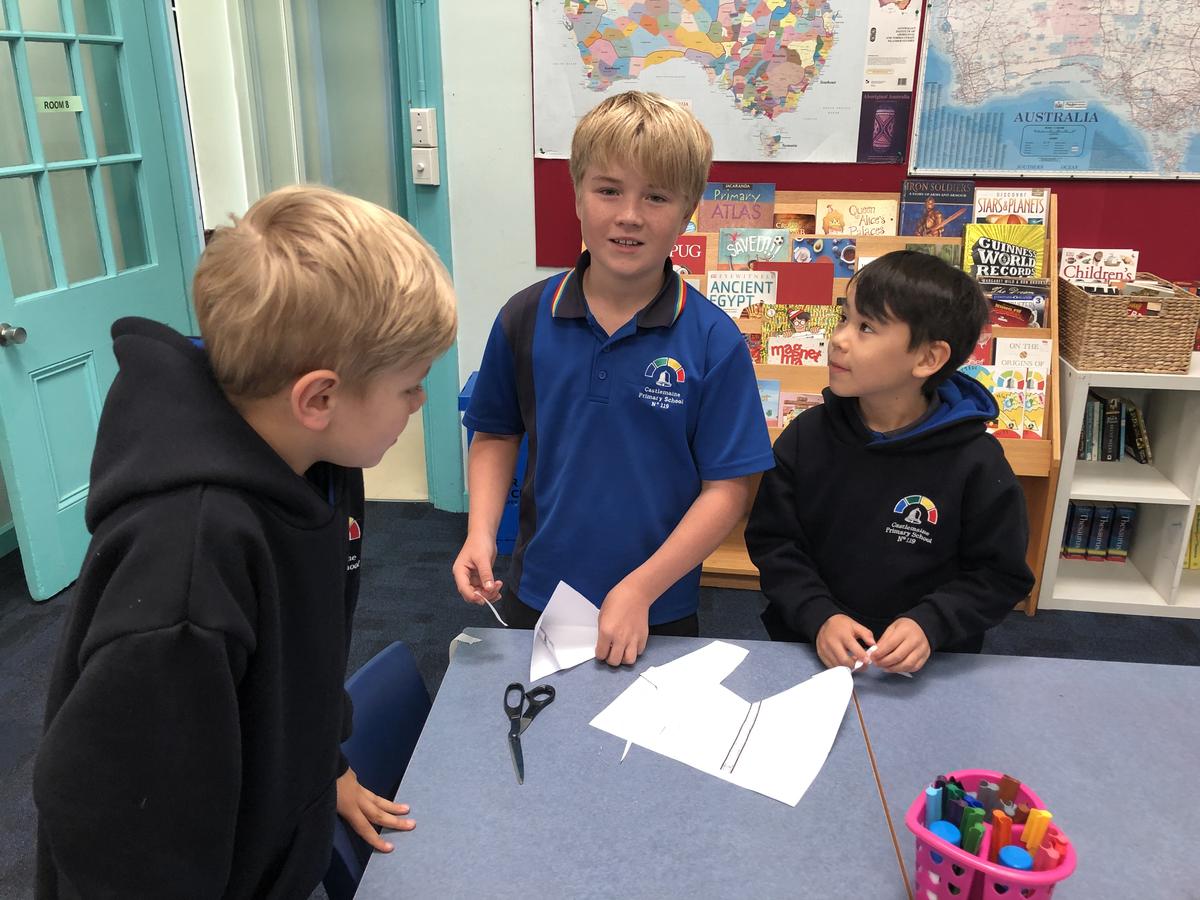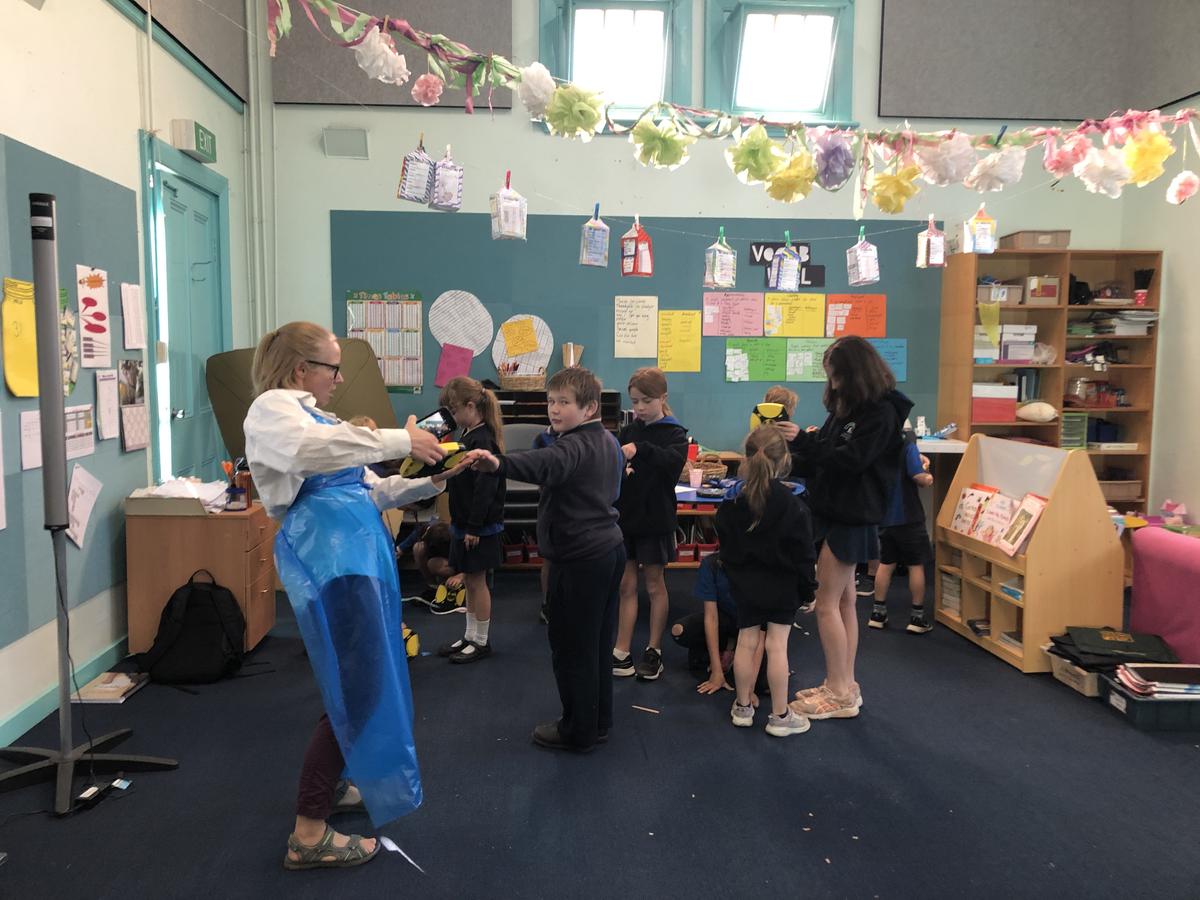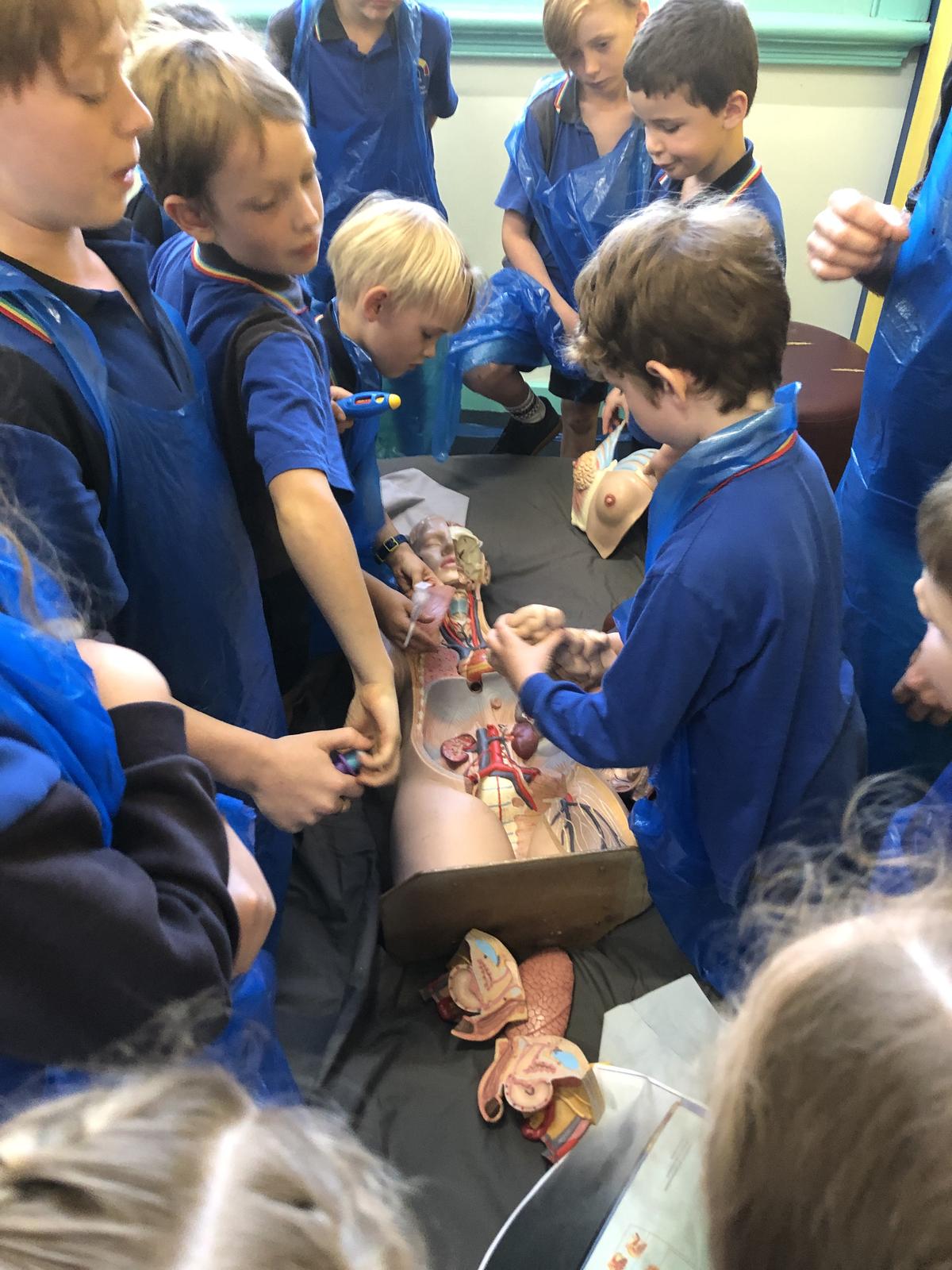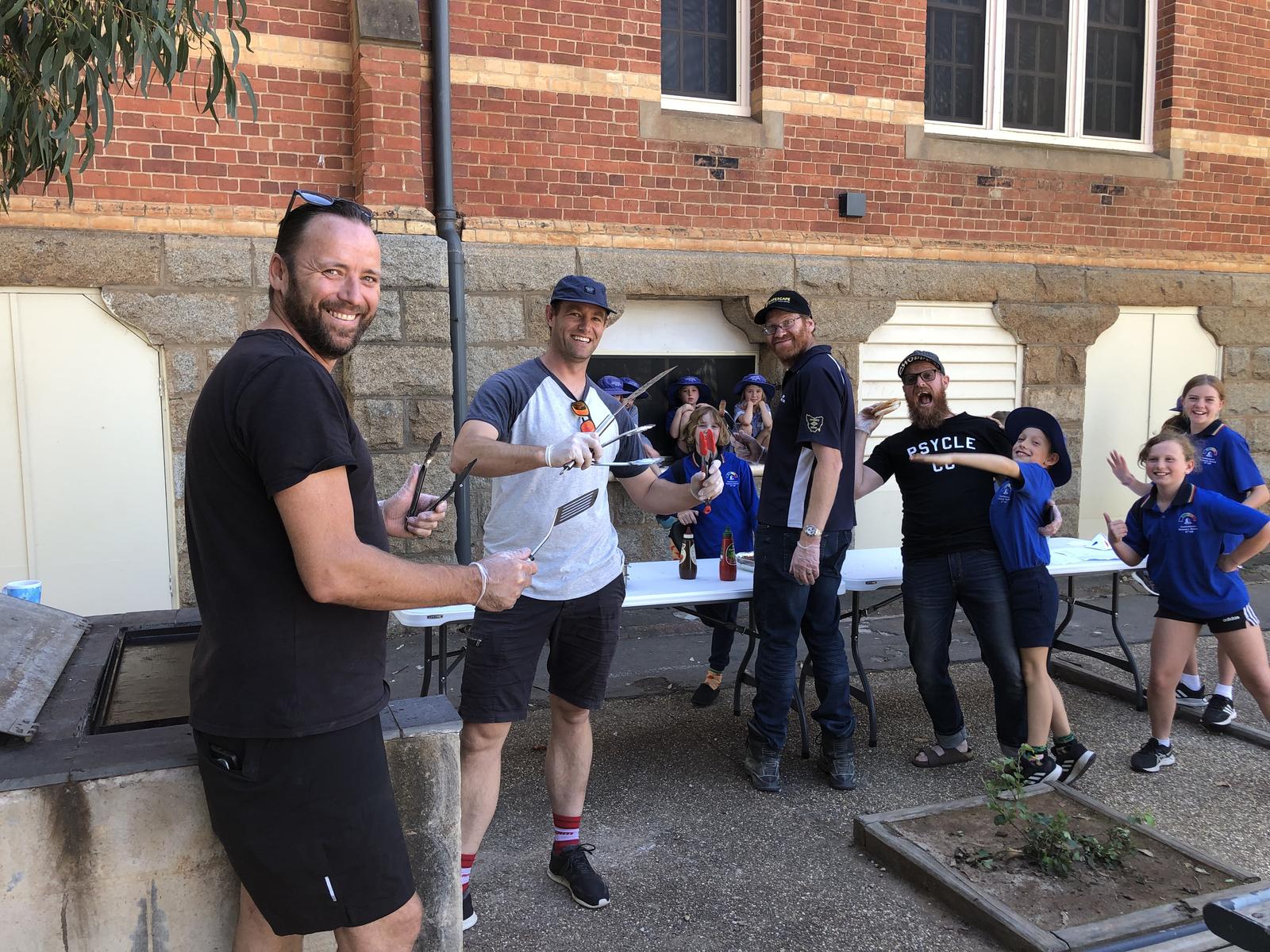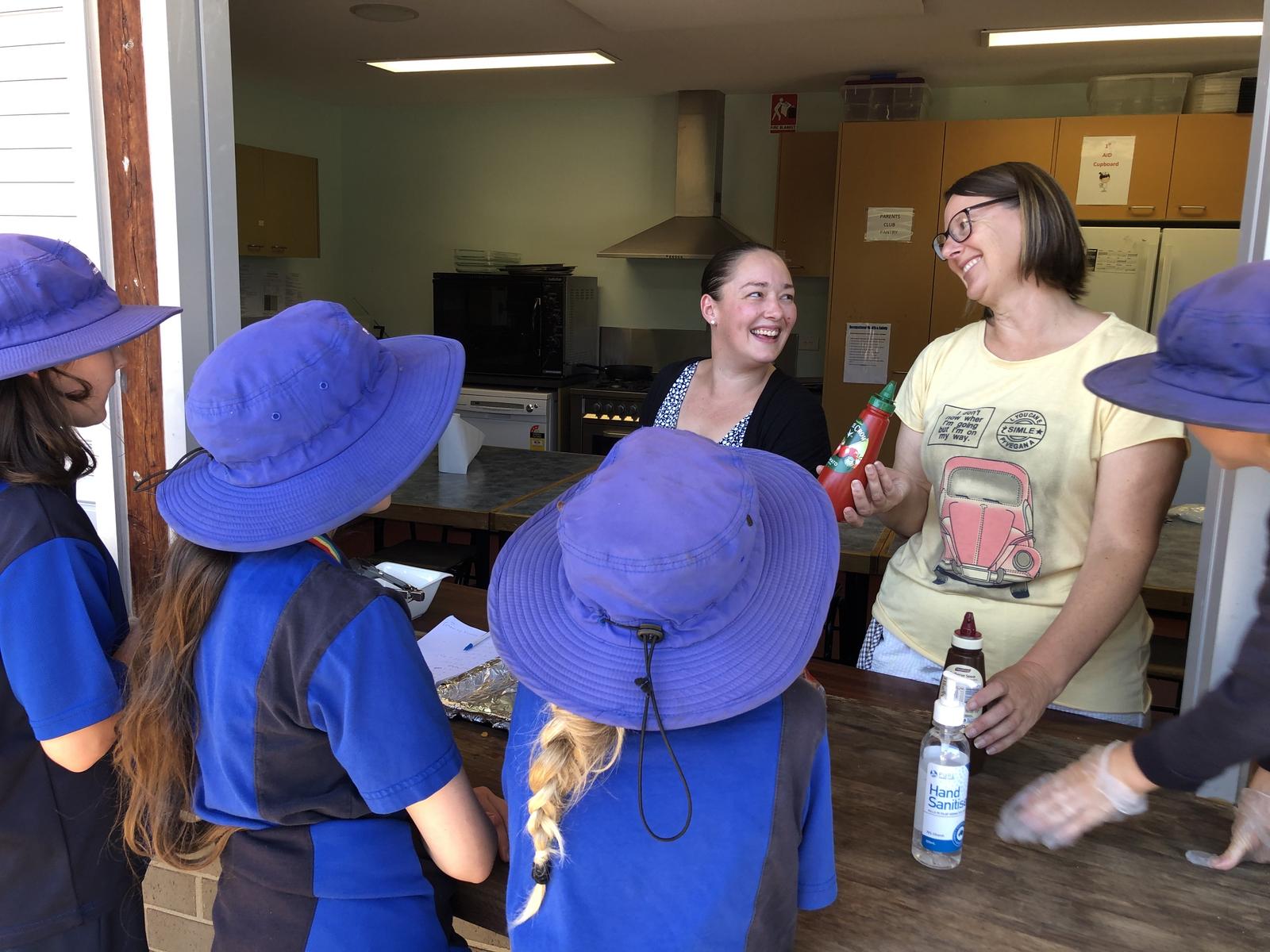BIG SCIENCE DAY
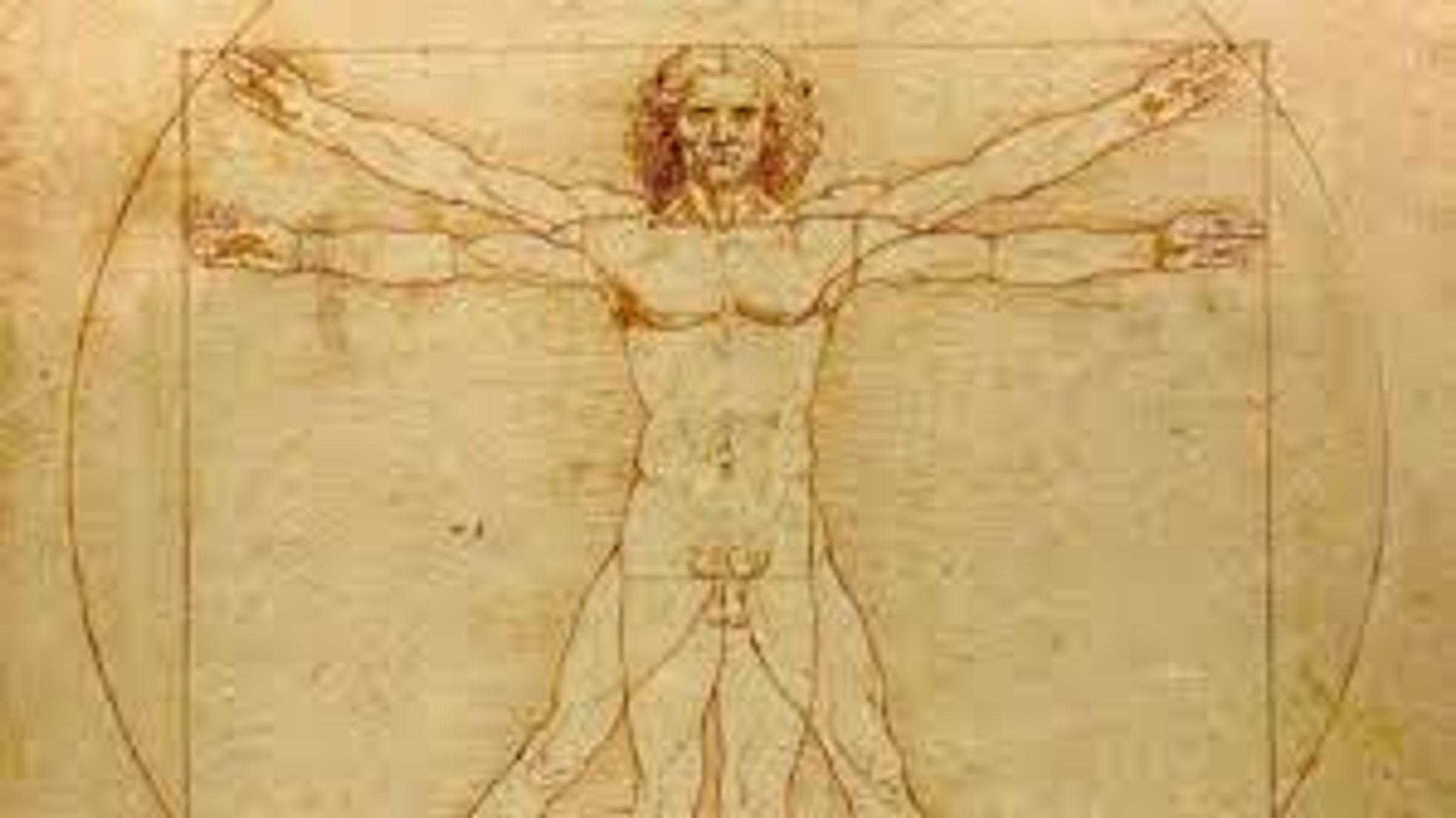
On Wednesday we conducted our first Big Science Day for the year. The theme for the day was Inventors: Leonardo Da Vinci. Children were broken into P-6 groups to participate in a range of inventive activities.
- Josh and Erin looked at human anatomy and da Vinci's Vitruvian Man.
- Kate and Juliet explored flight with parachutes
- Rachel and Demy built Da Vinci bridges under the topic of engineering
- Megan and Daniel focused on mirror writing
- In the afternoon, as a fun activity students viewed some of d Vinci's artwork, and probably his most famous piece, The Mona Lisa. The children then played with developing a 'parody' of the Mona Lisa.
I would like to thank Erin Cook for coordinating this day, and all our teachers who spent a great deal of time preparing and conducting all the activities.
WHO WAS LEONARDO?
Leonardo da Vinci (1452-1519) was a painter, architect, inventor, and student of all things scientific. His natural genius crossed so many disciplines that he epitomized the term “Renaissance man.” Today he remains best known for his art, including two paintings that remain among the world’s most famous and admired, Mona Lisa and The Last Supper. Art, da Vinci believed, was indisputably connected with science and nature. Largely self-educated, he filled dozens of secret notebooks with inventions, observations and theories about pursuits from aeronautics to anatomy. But the rest of the world was just beginning to share knowledge in books made with moveable type, and the concepts expressed in his notebooks were often difficult to interpret. As a result, though he was lauded in his time as a great artist, his contemporaries often did not fully appreciate his genius—the combination of intellect and imagination that allowed him to create, at least on paper, such inventions as the bicycle, the helicopter and an airplane based on the physiology and flying capability of a bat.

